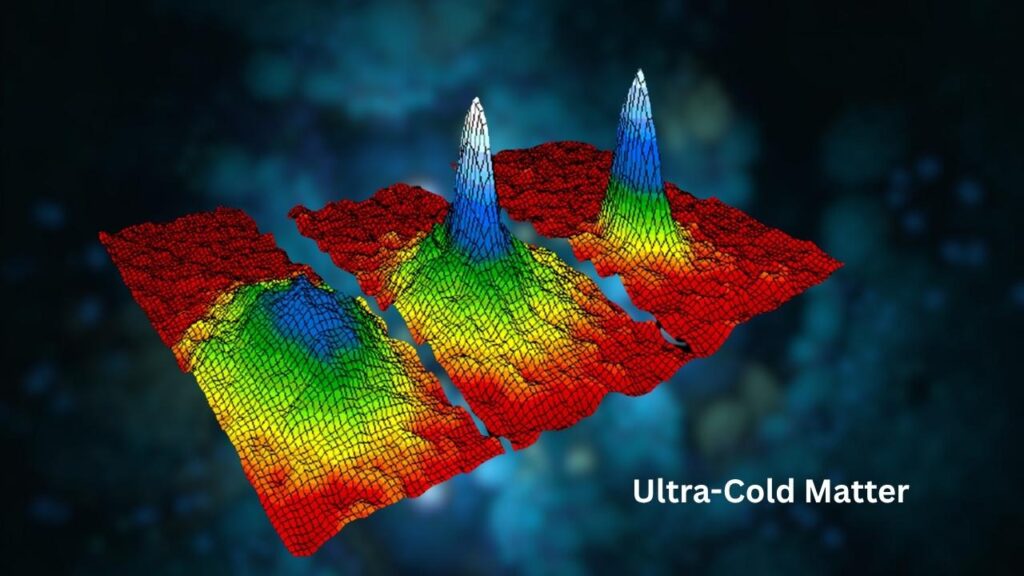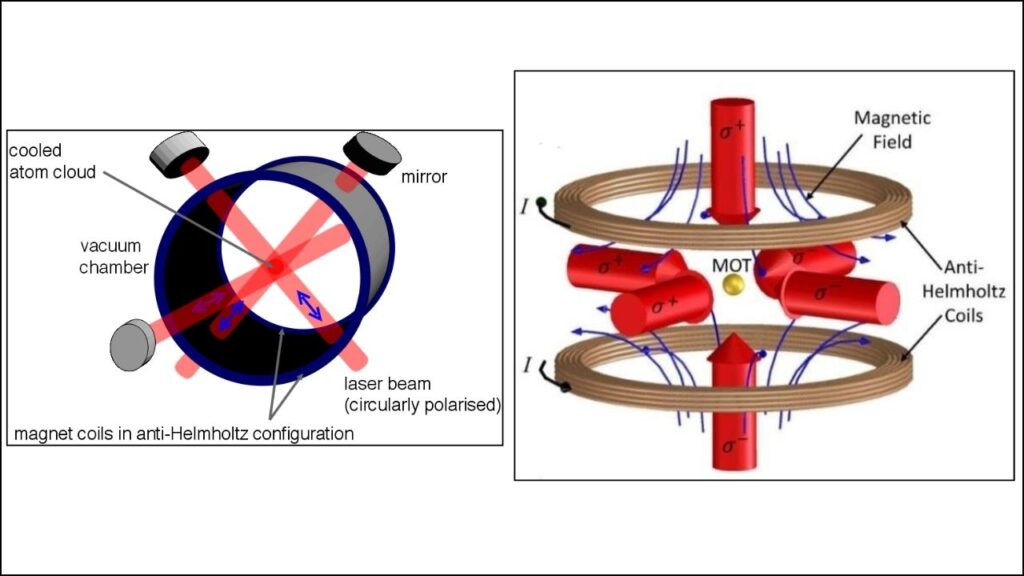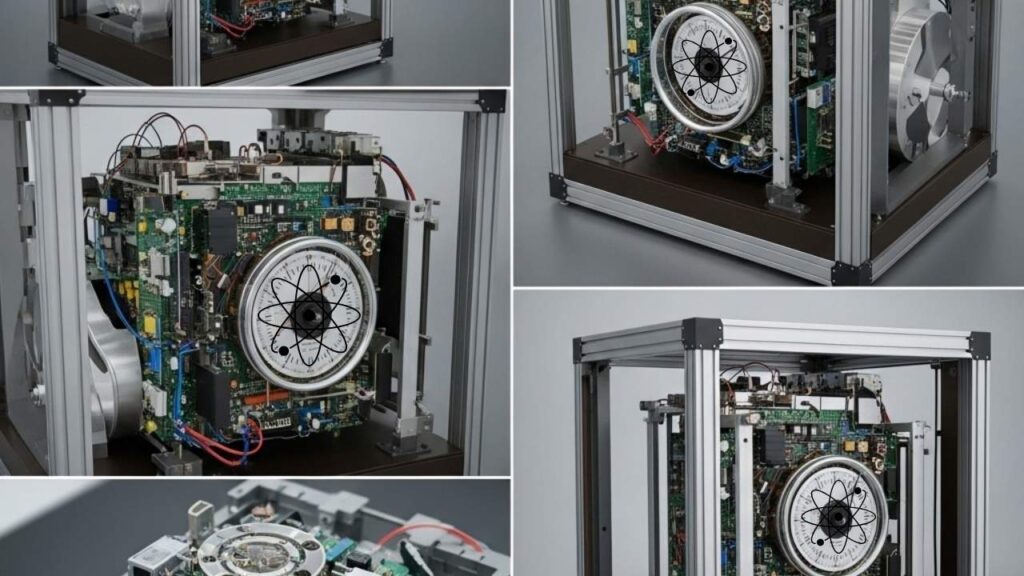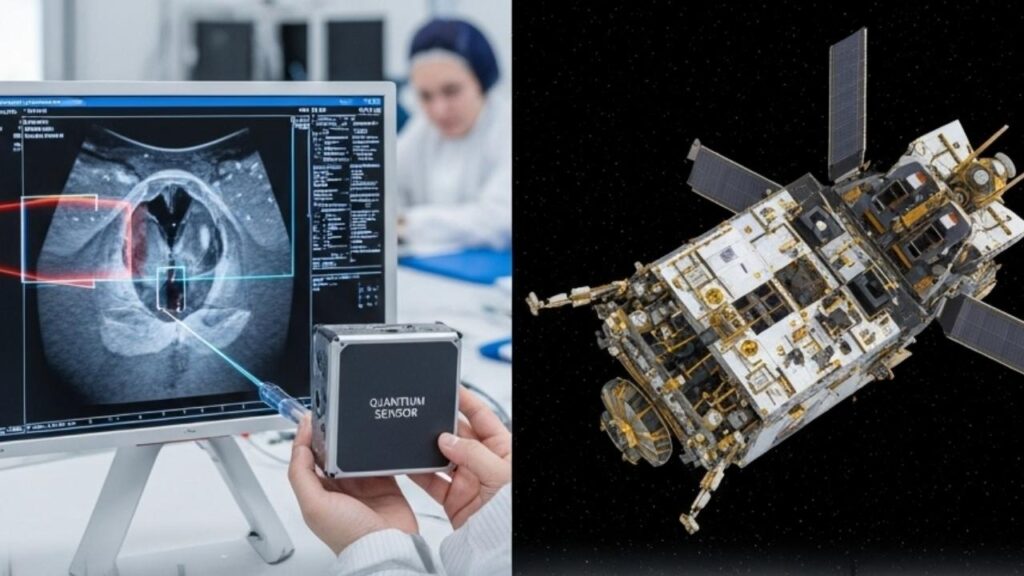New Discovery in Atomic Physics: Imagine a world where computers solve problems in seconds that today’s best supercomputers would take millennia to crack. Picture sensors so sensitive they can detect the faintest tug of gravity or the subtlest shift in a magnetic field, helping us predict earthquakes, monitor climate change, or even navigate deep space with unprecedented precision. This is not science fiction—it’s the promise of ultracold atomic physics, a rapidly evolving field where scientists cool atoms to temperatures just above absolute zero, revealing strange and powerful quantum behaviors.

In this article, we’ll take a deep dive into the latest breakthroughs in ultracold matter, explaining why these discoveries matter, how they’re changing technology, and what they mean for the future—whether you’re a curious 10-year-old or a seasoned professional.
Why Ultra-Cold Matter Matters
Ultracold matter is created when atoms are cooled so much that they almost stop moving. At these incredibly low temperatures—just a tiny fraction above absolute zero (−273.15°C)—atoms begin to follow the rules of quantum mechanics, the set of laws that govern the behavior of tiny particles like atoms and electrons.
Scientists achieve these ultra-low temperatures using special lasers and magnetic fields in a device called a magneto-optical trap (MOT).

The lasers act like an “atomic refrigerator,” slowing the atoms down until they’re almost motionless. At this point, the atoms enter a quantum world where they can form exotic states of matter, such as Bose-Einstein condensates and superfluids, and act as the building blocks for quantum computers and ultra-precise sensors.
New Discovery in Atomic Physics
| Key Aspect | Details & Statistics | Professional/Career Insight |
|---|---|---|
| Ultracold Atoms | Cooled to <1 mK (millikelvin), near absolute zero | Essential for quantum research |
| Quantum Sensors | Detect minute changes in gravity, magnetism, and time | Used in navigation, geology, medicine |
| Atomic Clocks | Most accurate timekeeping devices in the world | Critical for GPS, space exploration |
| Quantum Computers | Use atoms as qubits; companies like Google, IBM, Microsoft investing | High demand for quantum engineers |
| Chip-Scale Devices | Portable, durable quantum sensors and clocks | New career paths in quantum tech |
| New Elements | Main group III atoms (e.g., indium) now accessible to ultracold experiments | Expanding research possibilities |
The field of ultracold atomic physics is advancing at an astonishing pace. From quantum computers that could solve unsolvable problems to sensors that can detect the faintest signals from Earth or space, the possibilities are endless. By unlocking the quantum behaviors of matter at ultra-low temperatures, scientists are not only deepening our understanding of the universe but also paving the way for technologies that will transform our world.
Whether you’re a student curious about science, a professional looking to enter the quantum workforce, or just someone fascinated by the mysteries of the universe, the story of ultracold matter is one of discovery, innovation, and limitless potential.
How Ultra-Cold Matter Is Changing Technology
1. Quantum Computers: The Next Frontier
Quantum computers are set to revolutionize nearly every industry—from medicine and logistics to finance and materials science. Unlike classical computers, which use bits (0s and 1s), quantum computers use qubits—tiny particles like atoms that can exist in multiple states at once, thanks to a quantum phenomenon called superposition. This allows them to solve complex problems much faster than traditional computers.

Big tech companies like Google, IBM, and Microsoft are racing to build the first practical quantum computers using ultracold atoms. These atoms are trapped and cooled using lasers and magnetic fields, then manipulated to perform calculations. The more atoms (qubits) you can control, the more powerful the quantum computer. Recent advances have allowed researchers to control dozens of qubits at once, a significant step toward practical, large-scale quantum computing.
2. Ultra-Precise Atomic Clocks
Atomic clocks are the most accurate timekeeping devices ever made. They use the vibrations of atoms—like cesium or rubidium—to keep time. By cooling these atoms to ultra-low temperatures, scientists can reduce the noise and errors that come from atomic motion, making the clocks even more precise. This matters for things like GPS, space exploration, and even banking, where split-second accuracy is crucial.

Modern atomic clocks are so accurate that they would lose less than a second in 300 million years. This precision is essential for global navigation systems, deep-space missions, and synchronizing financial transactions around the world.
3. Quantum Sensors: Seeing the Invisible
Quantum sensors made from ultracold atoms can detect the smallest changes in gravity, magnetic fields, or even time. For example, these sensors might help us predict earthquakes by spotting tiny shifts in Earth’s gravity, or monitor climate change by tracking glacier movements with unprecedented accuracy.

Researchers are now working to shrink these sensors down to chip size, so they can be used outside the lab—even in space or in handheld devices. This could lead to new applications in geology, medicine, and national security.
4. Exotic States of Matter
When atoms are cooled to near absolute zero, they can form Bose-Einstein condensates and superfluids. These are states of matter where many atoms act as a single quantum object. Superfluids, for example, can flow without any friction, making them ideal for studying lossless energy transport—something that could lead to new kinds of superconductors or help us understand the physics of neutron stars.
Bose-Einstein condensates, first created in 1995, are now used in laboratories worldwide to study quantum mechanics in action. These states of matter allow scientists to observe quantum phenomena like wave-particle duality and quantum entanglement on a macroscopic scale.
A Step-by-Step Guide to How Scientists Create Ultra-Cold Matter
Let’s break down the process of creating ultracold atoms, step by step:
- Trapping the Atoms
Scientists start by trapping a cloud of atoms inside a vacuum chamber using magnetic fields and lasers. - Cooling with Lasers
Lasers are fired at the atoms, which slows them down. This is called laser cooling. - Evaporative Cooling
The faster-moving atoms are allowed to escape, leaving the slower, cooler atoms behind. This brings the temperature down even further. - Reaching Quantum Regime
Once the atoms are cold enough, they enter the quantum regime, where their behavior is governed by quantum mechanics. - Observing Quantum Phenomena
Scientists can now observe exotic states of matter, quantum entanglement, and other phenomena that are impossible to see at higher temperatures.
Breaking New Ground: Expanding the Periodic Table
Until recently, only certain atoms—like alkali metals (sodium, potassium, rubidium, cesium)—could be cooled to ultracold temperatures using standard techniques. However, researchers have found a way to cool main group III atoms (like indium) by using a special long-lived state called a metastable state.
This breakthrough, published in leading physics journals, opens up a whole new area of the periodic table for ultracold experiments. It means scientists can now study the quantum behavior of a much wider range of elements, potentially leading to the discovery of new quantum phenomena and new materials for technology.
The Science Behind the Breakthroughs
Laser Cooling and Trapping
Laser cooling works by using the momentum of photons (light particles) to slow down atoms. When an atom absorbs a photon moving in the opposite direction, it loses some of its own momentum, effectively cooling down. This process, combined with magnetic trapping, allows scientists to cool atoms to temperatures just a few billionths of a degree above absolute zero.
Quantum Simulation
Ultracold atoms are also used as quantum simulators—systems that can mimic the behavior of other quantum systems that are too complex to study directly. For example, ultracold atoms in optical lattices can simulate the behavior of electrons in a solid, helping scientists understand high-temperature superconductors or exotic magnetic materials.
Many-Body Physics
At ultracold temperatures, atoms interact in ways that reveal the secrets of many-body physics—the study of how large numbers of particles behave together. This is crucial for understanding phenomena like superconductivity, superfluidity, and quantum magnetism.
Practical Applications and Career Opportunities
The advances in ultracold atomic physics are creating new career opportunities in quantum science and engineering. Universities and research institutions around the world are expanding their programs in quantum technology, and companies are hiring physicists, engineers, and computer scientists to work on quantum computers, sensors, and clocks.
Professionals in this field need a strong background in physics, mathematics, and computer science, as well as hands-on experience with laboratory techniques like laser optics and vacuum systems. The demand for skilled workers in quantum technology is expected to grow rapidly in the coming years, making this an exciting and rewarding career path.
Advances in Quantum Computing and Hybrid Quantum-Classical Workflows
Google Research Warns Quantum Computing Could Crack Bitcoin Encryption Sooner Than Expected
Wipro Predicts Scalable Quantum Computing Solutions by Year-End
FAQs About Why Ultra-Cold Matter Matters
What is ultracold matter?
Ultracold matter is a collection of atoms cooled to temperatures just above absolute zero, where they exhibit quantum behaviors like superposition and entanglement.
Why do scientists cool atoms to such low temperatures?
Cooling atoms slows them down, making it possible to observe and control their quantum behavior. This is essential for building quantum computers, ultra-precise sensors, and studying exotic states of matter.
What is a magneto-optical trap (MOT)?
A MOT is a device that uses lasers and magnetic fields to trap and cool atoms to ultracold temperatures.
How are ultracold atoms used in technology?
Ultracold atoms are used in atomic clocks, quantum sensors, and quantum computers. They can also help us study new states of matter and simulate complex quantum systems.
Can ultracold experiments be done outside the lab?
Yes! Researchers are developing chip-scale devices that can trap and cool atoms outside the lab, making quantum technology more portable and accessible.
What new elements can now be studied at ultracold temperatures?
Recent breakthroughs have made it possible to cool main group III atoms, like indium, to ultracold temperatures, opening up new possibilities for research and technology.






